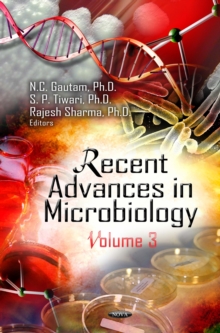
Endophytic Fungi: Biodiversity, Antimicrobial Activity and Ecological Implications PDF
Edited by Qiang-Sheng Wu
Part of the Microbiology Research Advances series
Description
Endophytes are a group of microorganisms that do not cause obvious disease symptoms to the host plants and include endophytic bacteria, endophytic fungi and endophytic actinomycetes.
Among them, endophytic fungi belong to ascomycetes and are widely distributed in mosses, ferns, shrubs, algae, herbs, angiosperms and gymnosperms.
Endophytic fungi establish a good mutualistic relationship with their hosts, which is reflected in accelerating plant growth, promoting nutrient uptake, and enhancing resistance to stress.
On the other hand, many endophytic fungi produce some secondary metabolites such as alkaloids, terpenoids, polysaccharides, phenols, etc., and thus have some pharmacological interventions and therapeutic effects with significant efficacy.
The present book revolves around the introduction and potential functions of endophytic fungi in the field.
The book presents four important sections, including (i) the introduction of endophytic fungi, (ii) diversity and antimicrobial activity of endophytic fungi from mangrove forests, (iii) positive effects of arbuscular mycorrhizal fungi on ornamental plants, and (iv) potential application and assessment of arbuscular mycorrhizal fungi on fruit trees, vegetable crops, and ornamental crops.
This book can provide important support for graduate students and researchers in the study of endophytic fungi.
On the other hand, the book also summarizes some new advances, especially in pharmacological interventions of endophytic fungi.
Information
-
Download - Immediately Available
- Format:PDF
- Pages:144 pages
- Publisher:Nova Science Publishers, Inc.
- Publication Date:02/12/2021
- Category:
- ISBN:9781685074425
Information
-
Download - Immediately Available
- Format:PDF
- Pages:144 pages
- Publisher:Nova Science Publishers, Inc.
- Publication Date:02/12/2021
- Category:
- ISBN:9781685074425










